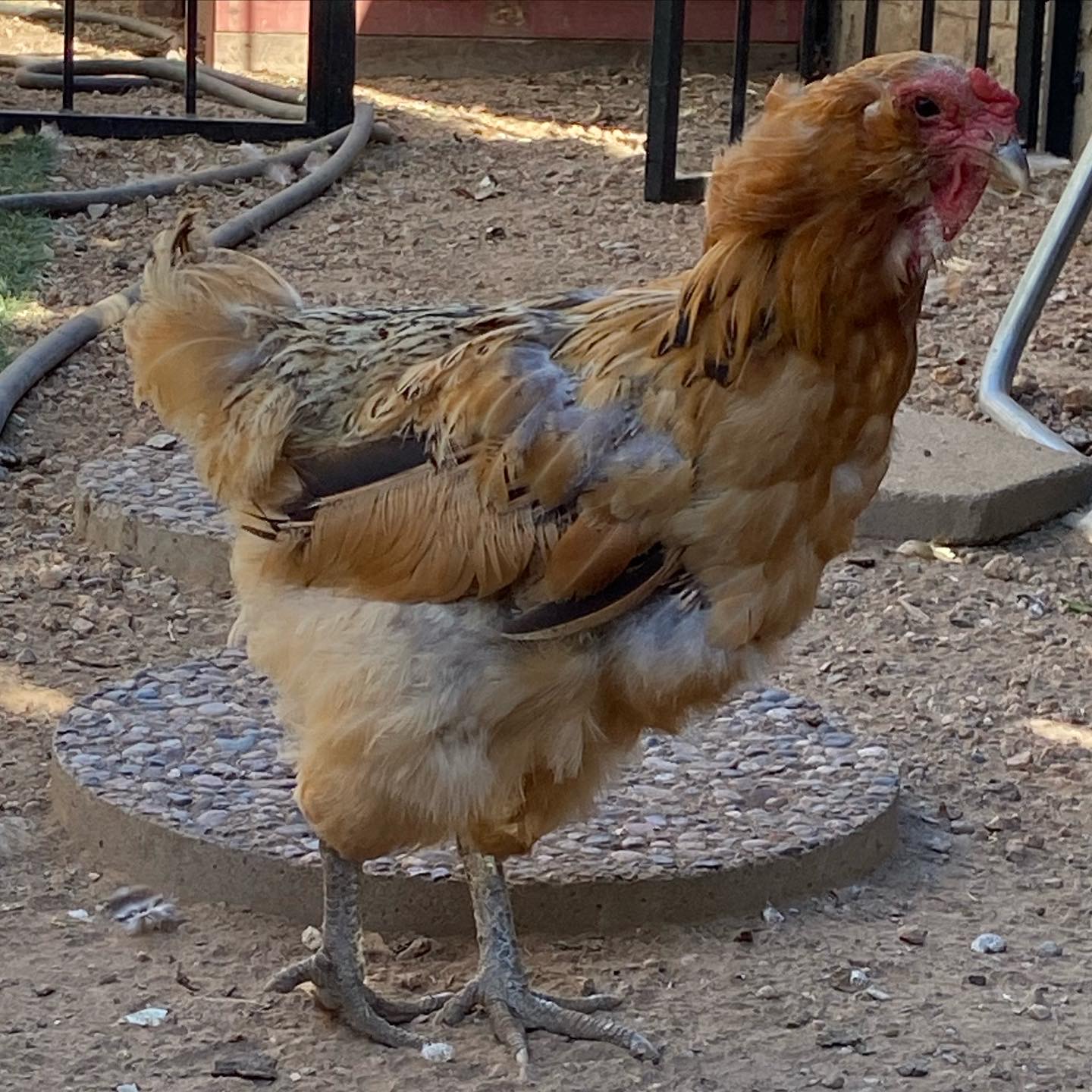Molting Chickens
When the weather starts to cool off after a long summer, you may start noticing more feathers laying around your chicken run or yard.
More than one occasion, I have run outside thinking there was a hawk attack after noticing a pile of feathers on the ground…only to find my chickens had started molting!
Before you freak out like I did, let’s learn a bit about what molting is, why chickens molt, and how to help them grow back healthy feathers!
What is Molting?
You may be wondering why your chickens have been losing so many feathers. Often, this is normal, and it just means your chickens are molting!
Molting is the regular shedding and growth of new feathers. As feathers become worn, they fall out (molt) and new, healthy feathers grow in to replace the old. This typically happens on a large scale in the fall, after a chicken is a year old.
Signs your Hen is Molting
Feathers everywhere
Fluffy patches on your chicken as they lose their outer feathers so their down shows through
Bald patches
Birds may not act like themselves and be moodier than usual
Hens may slow or completely stop laying to devote protein to feather production
Why do chickens molt?
Feathers are important to keep chickens dry and insulated. They protect their skin from sun damage and help ward off scratches from branches and are even utilized in communication! Because of these important functions, it is important for chickens to replace their damaged feathers through molting.
Chickens do a lot to keep their feathers pristine throughout the year by taking dust baths and preening. Chickens coat their feathers and skin in dirt to absorb extra moisture and soil, creating a hostile environment for bugs and parasites. When they preen, chickens use their beak to coat their feathers with a thick, transparent oil from their uropygial gland (preening gland located at the base of their tail) to waterproof them. Even with these grooming behaviors though, chickens’ feathers can damage through everyday activities.
When do Chickens Molt?
Chickens typically undergo two types of molting in their lifetime:
1. To lose their baby feathers and allow adult feathers to grow in. Around 4-5 weeks of age, chicks will start to lose their fluffy “down” feathers and replace them with their adult feathers. As their primary feathers start to come in, the pecking order starts to establish. You will also start to be able to tell pullets from cockerels!
2. Every fall to prepare for winter. As days start to get shorter and the weather becomes cooler, chickens’ hormones are triggered to begin losing feathers to prepare for a cold winter.
Reasons for Feather Loss Other than Molting
If chickens are losing lots of feathers outside of losing down and in the fall, it may indicate a health problem. Contact your veterinarian for more information.
Alternatively, if you have a rooster and you notice your hens are losing feathers on their head and back (saddle), this is likely from the rooster mounting them. To prevent him from hurting his ladies on accident, you can either separate the rooster or have your hens with missing feathers wear a fabric saddle. If you have enough hens with your rooster, this is less of a problem, because he will rotate between more ladies, rather than focusing all his attention on one.
Hens can also lose lots of feathers when they are overly stressed. Stressors can be extreme temperatures, bullying, overcrowding, poor diet, transport, illness, or air pollutants.
Hard vs. Soft Molting
Chickens have different personalities, and their “molting personalities” are no different. Some hens may lose their feathers all at once (hard molt), and some may take their time, losing only a few feathers at a time and draw the process out for months (soft molt).
How long does it take a chicken to molt?
Really, this depends on the individual chicken.
Younger chickens tend to molt faster than older chickens. It could take weeks or months.
Your flock may not even molt at the same time (which is kind of nice because your flock may still produce eggs)!
But, there are things YOU can do to help them along!
How to Help Your Chickens Through a Molt
Regardless of whether your flock takes three weeks or three months to molt, there are ways you can help them!
Increase their access to protein!
Feed your flock dandelions!
Dandelions are an excellent source of zinc. Supplementing your chickens’ diet with zinc has been shown to reduce feather fraying and abnormalities. Feeding dandelions throughout the year will help keep your chickens’ feathers neater and reduce the need for massive molting.
Add apple cider vinegar (with the mother) to their water.
Do not hold them as often.
Although there is not clear evidence supporting that new feathers poking through a chicken’s skin hurts, holding them can make them uncomfortable through this process.
Limit Stressors.
Let us know ways you help your chickens through a molt in the comments!
Happy Molting!





0 Comments